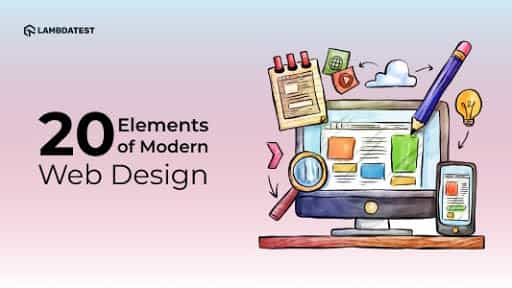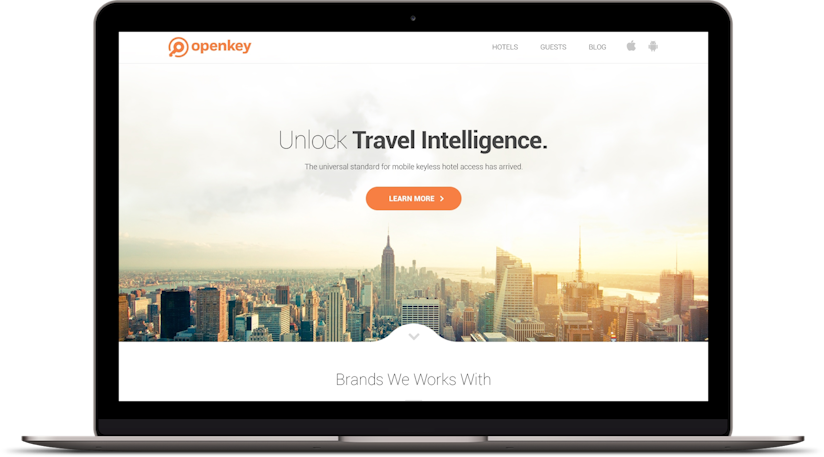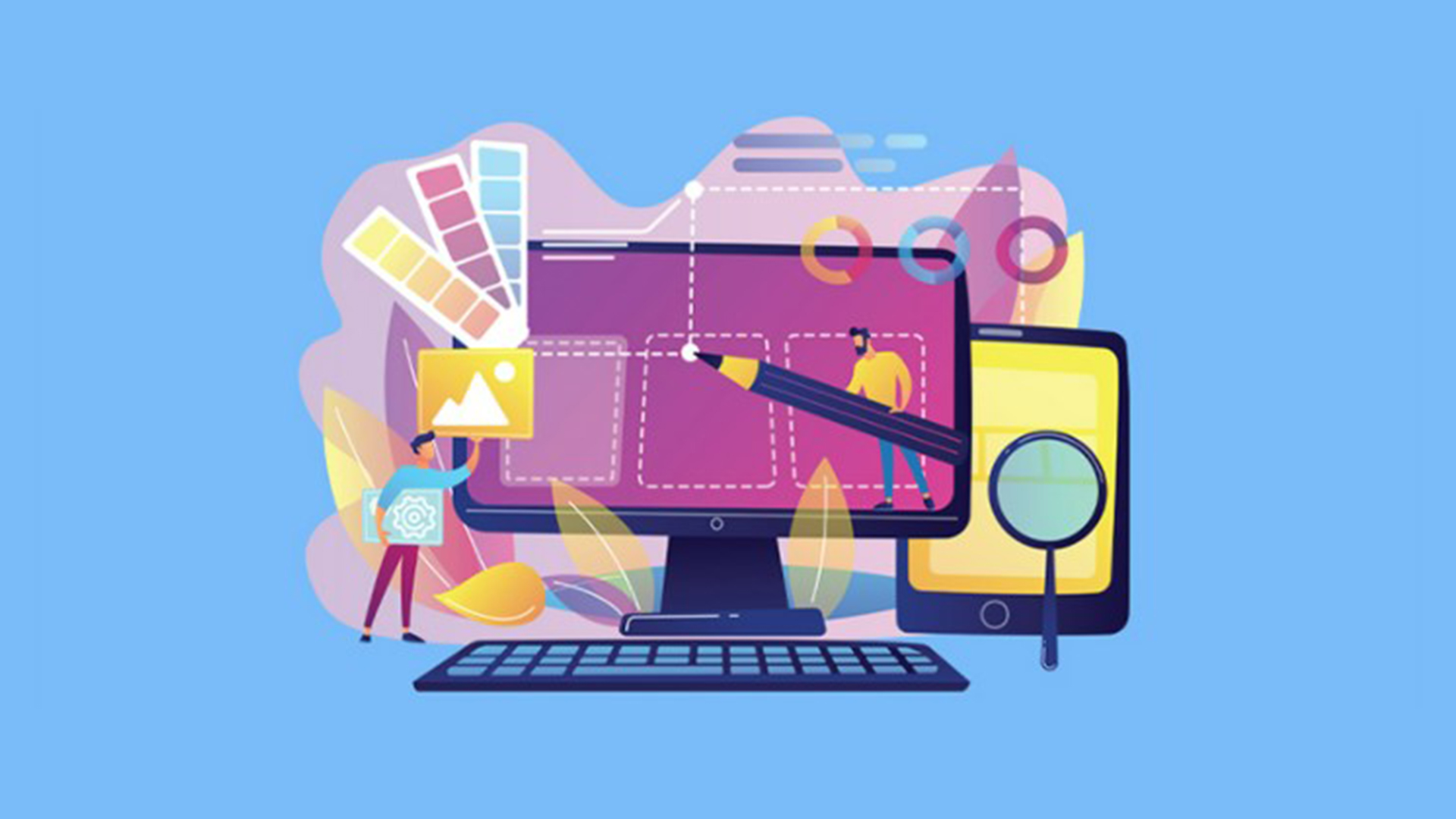All Categories
Featured
Table of Contents
- – Web Design Blog - Webdesigner Depot Webdesigne...
- – What Can I Do With A Web Design And Developme...
- – 53 Web Design Tools To Help You Work Smarter ...
- – Learn Web Design With Online Courses, Classes...
- – Siteinspire - Web Design Inspiration Tips and...
- – Web Design Company In Orlando, Florida And Ba...
- – Lifted Logic: Web Design In Kansas City - Se...
- – Google Web Designer - Home Tips and Tricks:
- – Indianapolis Web Design And Digital Marketin...
- – Learn Web Design With Online Courses, Classe...
- – Figma: The Collaborative Interface Design To...
Web Design Blog - Webdesigner Depot Webdesigner Depot Tips and Tricks:
Quick summary Functionality and the energy, not the visual style, identify the success or failure of a website. Given that the visitor of the page is the only person who clicks the mouse and for that reason decides whatever, user-centric style has established as a basic method for effective and profit-oriented website design - web design frederick md.
and the energy, not the visual design, identify the success or failure of a site. Considering that the visitor of the page is the only person who clicks the mouse and for that reason decides whatever, user-centric style has ended up being a standard method for effective and profit-oriented web design. After all, if users can't use a function, it might also not exist.
g. where the search box should be put) as it has actually currently been carried out in a variety of posts; rather we concentrate on the methods which, used effectively, can lead to more advanced design decisions and simplify the procedure of perceiving provided information. Please see that you might be interested in the usability-related short articles we've published prior to: Principles Of Great Website Design And Reliable Web Design Guidelines, In order to use the concepts appropriately we first require to understand how users interact with sites, how they believe and what are the fundamental patterns of users' behavior.
What Can I Do With A Web Design And Development Degree? Tips and Tricks:
Visitors glance at each brand-new page, scan some of the text, and click on the very first link that captures their interest or slightly resembles the important things they're searching for. There are big parts of the page they do not even look at. Many users look for something fascinating (or beneficial) and clickable; as quickly as some promising candidates are discovered, users click.
If a page supplies users with top quality material, they are prepared to jeopardize the material with ads and the design of the website. This is the factor why not-that-well-designed websites with premium content get a great deal of traffic over years. Material is more important than the design which supports it.

Users don't check out, they scan. Notice how "hot" locations abrupt in the middle of sentences. This is typical for the scanning procedure. Very easy concept: If a website isn't able to fulfill users' expectations, then designer stopped working to get his task done effectively and the business loses money. The greater is the cognitive load and the less instinctive is the navigation, the more prepared are users to leave the site and search for alternatives.
53 Web Design Tools To Help You Work Smarter In 2022 Tips and Tricks:
Neither do they scan website in a direct fashion, going sequentially from one website section to another one. Rather users satisfice; they choose the very first reasonable alternative. As quickly as they find a link that appears like it may cause the objective, there is a great chance that it will be instantly clicked.
It does not matter to us if we understand how things work, as long as we can utilize them. If your audience is going to act like you're designing billboard, then style great signboards." Users desire to have the ability to control their browser and depend on the consistent data presentation throughout the site.
If the navigation and site architecture aren't user-friendly, the number of enigma grows and makes it harder for users to understand how the system works and how to get from point A to point B. A clear structure, moderate visual clues and easily recognizable links can assist users to discover their course to their aim.
Learn Web Design With Online Courses, Classes, & Lessons Tips and Tricks:

claims to be "beyond channels, beyond products, beyond distribution". What does it mean? Given that users tend to explore websites according to the "F"-pattern, these three statements would be the very first elements users will see on the page once it is loaded. The design itself is basic and user-friendly, to comprehend what the page is about the user requires to browse for the response.
When you have actually achieved this, you can communicate why the system works and how users can gain from it. Individuals will not utilize your web site if they can't find their method around it. 2. Do Not Misuse Users' Persistence, In every task when you are going to use your visitors some service or tool, try to keep your user requirements minimal.
Newbie visitors are ready to, not filling long web types for an account they may never use in the future. Let users check out the site and discover your services without forcing them into sharing private information. It's not reasonable to require users to get in an e-mail address to check the function.
Siteinspire - Web Design Inspiration Tips and Tricks:
Stikkit is an ideal example for an user-friendly service which needs nearly absolutely nothing from the visitor which is inconspicuous and comforting. And that's what you want your users to feel on your website. Obviously, Termite needs more. However the registration can be done in less than 30 seconds as the form has horizontal orientation, the user does not even need to scroll the page.
A user registration alone is enough of an impediment to user navigation to minimize inbound traffic. 3. Manage To Focus Users' Attention, As sites offer both static and dynamic material, some aspects of the interface bring in attention more than others do. Obviously, images are more appealing than the text simply as the sentences marked as vibrant are more attractive than plain text.
Focusing users' attention to specific locations of the website with a moderate usage of visual aspects can assist your visitors to obtain from point A to point B without thinking of how it really is supposed to be done. The less enigma visitors have, the they have and the more trust they can establish towards the business the site represents.
Web Design Company In Orlando, Florida And Bangor, Maine Tips and Tricks:
4. Pursue Feature Direct exposure, Modern website design are generally slammed due to their technique of assisting users with visually appealing 1-2-3-done-steps, big buttons with visual results etc. However from the design point of view these elements actually aren't a bad thing. On the contrary, such as they lead the visitors through the site content in a very simple and user-friendly way.
The site has 9 main navigation choices which are visible at the very first look. The option of colors might be too light. is a basic principle of successful interface style. It doesn't truly matter how this is achieved. What matters is that the content is well-understood and visitors feel comfy with the way they communicate with the system.
com gets directly to the point. No cute words, no exaggerated declarations. Rather a cost: just what visitors are looking for. An ideal service for efficient writing is touse short and concise phrases (come to the point as rapidly as possible), usage scannable layout (categorize the content, utilize multiple heading levels, utilize visual elements and bulleted lists which break the circulation of consistent text blocks), use plain and unbiased language (a promotion doesn't need to sound like advertisement; give your users some reasonable and unbiased reason why they must utilize your service or remain on your site)6.
Lifted Logic: Web Design In Kansas City - Seo - Website ... Tips and Tricks:
Users are hardly ever on a website to take pleasure in the style; moreover, in many cases they are looking for the info in spite of the design - web design frederick md. Pursue simplicity instead of intricacy. From the visitors' point of view, the finest website design is a pure text, with no ads or additional content obstructs matching exactly the inquiry visitors utilized or the content they've been searching for.
Finch plainly provides the details about the site and provides visitors an option of alternatives without overcrowding them with unneeded content. 7. Don't Hesitate Of The White Space, In fact it's really tough to overstate the importance of white space. Not only does it help to for the visitors, however it makes it possible to view the info presented on the screen.
Complex structures are harder to check out, scan, analyze and work with. If you have the choice between separating 2 style sectors by a noticeable line or by some whitespace, it's normally much better to utilize the whitespace option. (Simon's Law): the better you manage to offer users with a sense of visual hierarchy, the easier your content will be to perceive.
Google Web Designer - Home Tips and Tricks:
The very same conventions and guidelines ought to be applied to all elements.: do the most with the least quantity of cues and visual aspects. Clarity: all components must be created so their significance is not ambiguous.
Conventions Are Our Friends, Standard design of website components does not result in a dull web site. In reality, as they reduce the finding out curve, the need to figure out how things work. For circumstances, it would be an usability problem if all sites had different visual discussion of RSS-feeds. That's not that different from our regular life where we tend to get utilized to standard principles of how we arrange information (folders) or do shopping (placement of products).
understand what they're getting out of a website navigation, text structure, search positioning etc. A case in point from use sessions is to translate the page in Japanese (assuming your web users do not know Japanese, e. g. with Babelfish) and offer your functionality testers with a task to find something in the page of various language.
Indianapolis Web Design And Digital Marketing Agency Tips and Tricks:
Steve Krug recommends that it's much better to, but take benefits of conventions when you do not. 10. Test Early, Test Typically, This so-called TETO-principle ought to be applied to every website design project as functionality tests typically provide into considerable issues and problems connected to a provided layout. Test not too late, not insufficient and not for the incorrect reasons.
Some essential points to keep in mind: according to Steve Krug, and screening one user early in the project is better than testing 50 near the end. Accoring to Boehm's first law, errors are most regular during requirements and style activities and are the more expensive the later they are removed.
That implies that you design something, test it, fix it and then test it again. There might be problems which haven't been discovered during the first round as users were virtually obstructed by other problems.
Learn Web Design With Online Courses, Classes, & Lessons Tips and Tricks:

This holds for designers. After you have actually dealt with a website for couple of weeks, you can't observe it from a fresh perspective anymore. You know how it is built and therefore you understand exactly how it works you have the knowledge independent testers and visitors of your site wouldn't have.
It can be connected to other areas such as graphic design, user experience, and multimedia arts, however is more aptly seen from a technological standpoint. It has become a big part of individuals's everyday lives. It is hard to picture the Internet without animated graphics, different designs of typography, background, videos and music.

During 1991 to 1993 the World Wide Web was born. Text-only pages could be seen using a simple line-mode internet browser. There had been no integrated method to graphic style components such as images or sounds.
Figma: The Collaborative Interface Design Tool. Tips and Tricks:
The W3C was produced in October 1994 to "lead the World Wide Web to its complete capacity by developing common protocols that promote its development and ensure its interoperability." This discouraged any one business from monopolizing a propriety web browser and shows language, which might have changed the effect of the Internet as a whole.
As this has taken place the innovation of the web has actually likewise moved on. There have actually also been substantial modifications in the way individuals utilize and access the web, and this has changed how websites are designed.
Learn more about Lovell Media Group LLC or TrainACETable of Contents
- – Web Design Blog - Webdesigner Depot Webdesigne...
- – What Can I Do With A Web Design And Developme...
- – 53 Web Design Tools To Help You Work Smarter ...
- – Learn Web Design With Online Courses, Classes...
- – Siteinspire - Web Design Inspiration Tips and...
- – Web Design Company In Orlando, Florida And Ba...
- – Lifted Logic: Web Design In Kansas City - Se...
- – Google Web Designer - Home Tips and Tricks:
- – Indianapolis Web Design And Digital Marketin...
- – Learn Web Design With Online Courses, Classe...
- – Figma: The Collaborative Interface Design To...
Latest Posts
Web Design West Palm Beach:
Minneapolis Web Design - 100+ Five Star Reviews - Seo ... Tips and Tricks:
Modern Website Designs - Best Web Page Designers Tips and Tricks:
More
Latest Posts
Web Design West Palm Beach:
Minneapolis Web Design - 100+ Five Star Reviews - Seo ... Tips and Tricks:
Modern Website Designs - Best Web Page Designers Tips and Tricks: